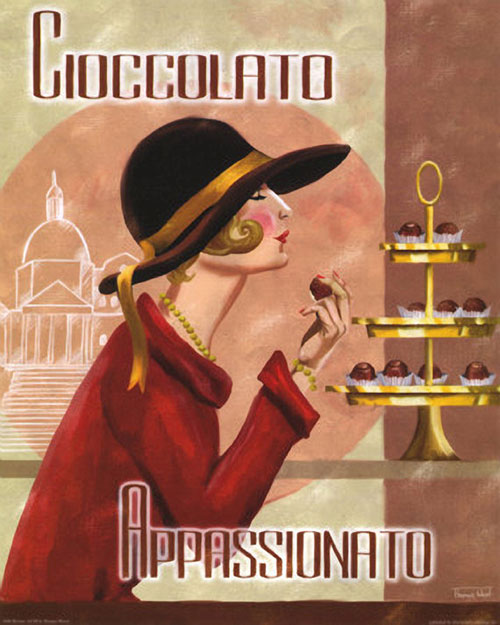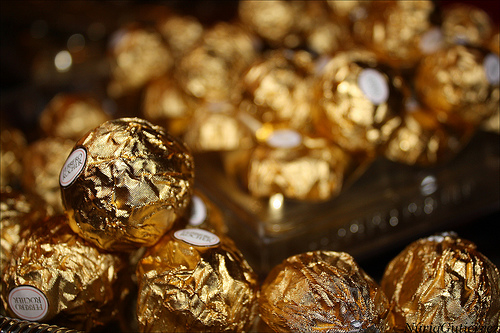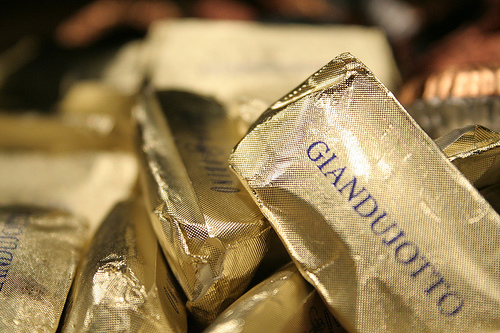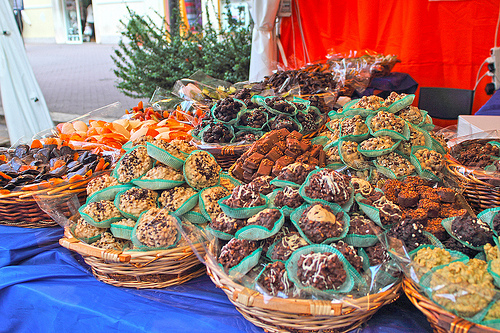A Decadent History of Italy’s Most Popular Chocolates
This blog post was written by ACIS Tour Manager, Giacomo Gambone.
The history of chocolate as we know it, the most innocent of all sins, the daily, healing little pleasure, started with an Italian sailing the wrong direction. But that is a story that we’ve all heard a million times. Columbus, who else, was the first to take some cocoa from South America. The product used by Maya and Aztec for religious rituals, frequently offered to Gods, was soon to become worshipped in a much more pagan way.
Our friend Columbus was born in a city in North West Italy, Genoa. And by coincidence, that’s where chocolate started flooding from, onto the peninsula nowadays known as Italy. It was a slow but persistent wave, as in the beginning the whole choco-trend wasn’t very much appreciated. This sounds unbelievable, but pure chocolate, as you might have experienced, has a bitter taste. Then someone added sugar. And bingo! The binge could finally get started!
The connection between chocolate and Italy is something you wouldn’t really think about. Chocolate is Swiss, right? I’m here to prove that this is only partially true. But let’s start from scratch. It is 1678, and Italy, or better said the Italian peninsula, is dominated mostly by Spain with France willing to attack and with a foot in the door, waiting. In the middle, a cushion. The Duchy of Savoy. A family of French origin, (the Savoy is still nowadays a region in France) that settled in the North-West of the “boot.”
It is possible that the Duke of Savoy, squeezed between these two powers needed something to kick the stress away, to chill, to relax. And…is there anything better than a cup of hot chocolate? Ok probably I’m making up some history here, but it is in the books that in 1678 the Duchy of Savoy became the first part of Italy where the sell of chocolate drinks was authorized. In a nutshell, the year when it all started.
Munching years and centuries away, we land to another mark in history. It’s 1852. The French made it. They were all over the peninsula. They were all over Europe, actually! So present that they were able to disrupt the trades of chocolate between Jamaica, the area with the highest density of this crop, and England, the highest importer and trader of chocolate of the time. Italy, just like the whole of Europe, experienced a shortage.
But shortages in history have lead to brains sharpening. This time the history repeated. Two men, in Turin, were spectators of a tragic forecast. They ran a chocolate business, that now was in serious danger. But something like this has happened countless times in history. When you are with your back to the wall, is when you put that extra effort, that spark, that takes you out of trouble. These two men were Ernesto Caffarel and his business partner Michele Prochet. The two lads had to provide chocolate of decent quality made with whatever ingredient the area could offer. Well, the only ingredient that was fat and greasy enough were hazelnuts. Mixed with cocoa powder (yes, a bit still made it to Turin!) and sugar, the outcome was the so-called Pasta Gianduja. This name might not mean a lot to readers, as it hasn’t spread worldwide. What it has spread on our toasted slices of bread is the name of a very similar product. Nutella.
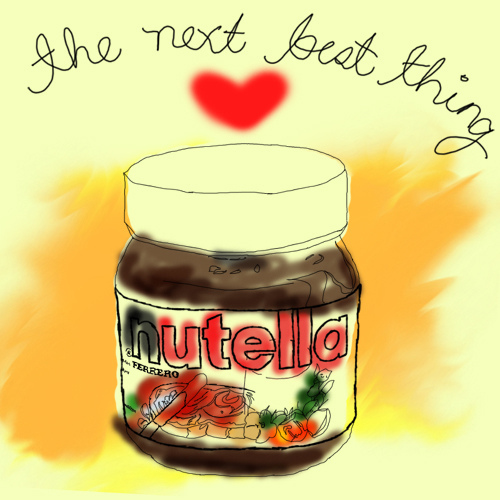
Yes, HRH Nutella. The queen of chocolates has actually only a little part of cocoa. It’s mostly made of hazelnut. As the name suggests. Pun intended, and generally not understood by Italians. Well played Ferrero! The owner of the company that produces Nutella, Michele Ferrero, is nowadays the richest man in Italy, ranking 28th in the world. He owns brands such as Kinder, Ferrero and, as I said before, Nutella. Ferrero also produces one of the best kind of pralines on the planet! The Rocher. French name, golden wrap, tiny tiny layer of chocolate on the outside, sparkled with crumbled hazelnut. These pralines are famous for contradicting the saying “Life is like a box of chocolates, you never know what you’re gonna get”. With Rocher we all know exactly what we’re getting and that’s why we love them! But thinking about it, if Forrest Gump would have eaten Ferrero Rocher the movie would have been incredibly boring.
Ferrero is certainly the tip of the iceberg of a widespread business, worth about 3 billion Euros in 2012. It is a nationwide trade, but we can easily pick three capitals of chocolate in Italy. These are, from north to south, Turin, Perugia and Modica.
Torino, or Turin, has a wide variety of producers, apart from the giant Ferrero. Caffarel is still in business providing middle-high quality chocolate. Venchi has created a little empire of shops all over Italy and Guido Gobino owns a tiny corner shop in the central Via Lagrange, and is a must stop for visitors in town. Tiny but strong! If you’re looking for specialties though, you have to check out Pepino, the first shop in Italy to cover with chocolate its top notch gelatos. Ask any local and they will surely point out the secluded wonder-bar Bicerin, that serves the same name delicacy. The Bicerin (literally a small glass), is a secret mix of chocolate, cream and coffee. It is considered one of the cultural symbols of the region.
More famous treats, that originated in Turin but can be now found all over Italy are the Giandujotto and the Cremino. The first looks like an upturned boad shaped candy, made with Gianduja chocolate. The second is made with the same mix but in layers. Top and bottom layers are generally Gianduja chocolate, the middle one varies, and can be white chocolate, pistachio, lemon or whatever the confectioner fancies.
All this chocolate galore is celebrated every year with a festival: CioccolaTo’, in November.
Perugia is home of another widely famous brand: Perugina. Now, if you’re in love read this. On Valentine’s day, buy your significant other a box of Baci. In Italian, kisses. They come with a tiny piece of paper contained in the wrapping, on which is written a romantic message. In English and Italian! So you can learn bits and bobs of a language while eating chocolate.
Sweet…
In Perugia there’s also a museum that celebrates the history of the company and every year you can stroll in a chocolate market at Eurochocolate. This year’s edition will be held from October 17th to the 26th.
Going further south in the journey through Italian chocolate, and crossing on a ferry to Sicily, you’ll end up in Modica, a town of about 60,000 inhabitants. At the same latitude as Tunis, Modica is worldwide famous for its chocolate. Celebrated in a festival called ChocoBarocco (in Modica, as in the whole of Sicily, Baroque architecture is predominant), the local delicacy is an unexpected tasting experience. In fact, what makes this chocolate different from any other is its texture. Normally, correct me if I am wrong, a piece of chocolate melts smoothly in your mouth. Modica chocolate feels a bit like powder. The reason is simple. During the preparation, chocolate is not heated enough, and sugar doesn’t melt but remains crystallized. Plus no milk or fats are added. Also, to make the tasting experience even more special, the spectrum of flavours varies from lemon, oranges, to more peculiar ones such as chili peppers, vanilla or ginger.
So, what’s your next destination? The town of the sweet Gianduja, the romantic Perugia or Modica, with his chocolate flavoured with Baroque richness?
[Image sources: Italian Chocolate Print | Nutella | Ferrero Rocher | Giandujotto| ChocoBarocco Festival]
